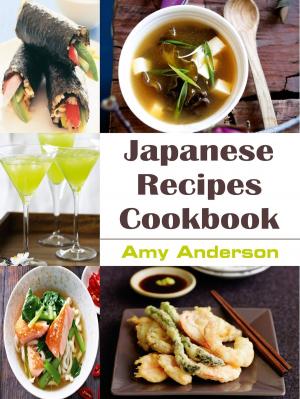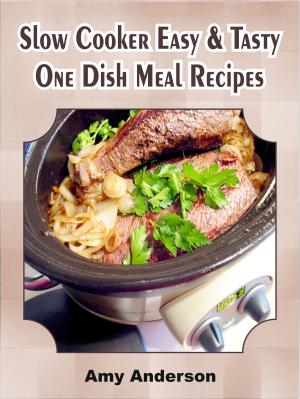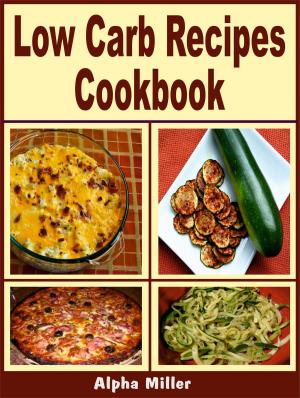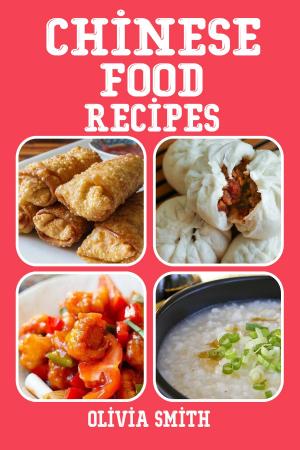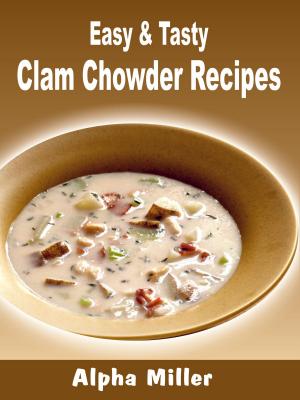Filipino Cookbook
Easy Recipes from Filipino Cuisine
Nonfiction, Food & Drink, Breakfast & Brunch, International, Asian, Quick & Easy| Author: | Alexis Mitchell | ISBN: | 1230003163887 |
| Publisher: | Alpa Rationalist | Publication: | April 2, 2019 |
| Imprint: | Language: | English |
| Author: | Alexis Mitchell |
| ISBN: | 1230003163887 |
| Publisher: | Alpa Rationalist |
| Publication: | April 2, 2019 |
| Imprint: | |
| Language: | English |
Filipino cuisine is composed of the cuisines of 144 distinct ethno-linguistic groups found throughout the Philippine. However, a majority of mainstream Filipino dishes that compose Filipino cuisine are from the cuisines of the Ilocano, Pangasinan, Kapampangan, Tagalog, Bicolano, Visayan, Chavacano and Maranao ethno-linguistic groups.
The style of cooking and the food associated with it have evolved over many centuries from their Austronesian origins (shared with Malaysian and Indonesian cuisines) to a mixed cuisine of Indian, Chinese, Spanish and American influences, in line with the major waves of influence that had enriched the cultures of the Philippine.
Counterpoint is a feature in Filipino cuisine which normally comes in a pairing of something sweet with something salty, and results in surprisingly pleasing combinations. Examples include: champorado (a sweet cocoa rice porridge), being paired with tuyo (salted, sun-dried fish); dinuguan (a savory stew made of pig's blood and innards), paired with puto (sweet, steamed rice cakes); unripe fruits such as green mangoes (which are only slightly sweet but very sour), are eaten dipped in salt or bagoong; the use of cheese (which is salty-sweet) in sweetcakes (such as bibingka and puto), as well as an ice cream flavoring.
Cooking and eating in the Philippines has traditionally been an informal and communal affair centeredaround the family kitchen. Filipinos traditionally eat three main meals a day: agahan or almusal (breakfast), tanghalían (lunch), and hapunan (dinner) plus an afternoon snack called meriénda (also called minandál or minindál).
Snacking is normal. Dinner, while still the main meal, is smaller than other countries. Usually, either breakfast or lunch is the largest meal. Food tends to be served all at once and not in courses.
Here in this book you will find many varities of Filipino Recipes which are not only delicious but very easy to make with less ingredients.
You will find Filipino recipes like .
Filipino noodles
Filipino potato rice
Filipino egg roll
Baked rice custard
Filipino chocolate meat and many more.......
Filipino cuisine is composed of the cuisines of 144 distinct ethno-linguistic groups found throughout the Philippine. However, a majority of mainstream Filipino dishes that compose Filipino cuisine are from the cuisines of the Ilocano, Pangasinan, Kapampangan, Tagalog, Bicolano, Visayan, Chavacano and Maranao ethno-linguistic groups.
The style of cooking and the food associated with it have evolved over many centuries from their Austronesian origins (shared with Malaysian and Indonesian cuisines) to a mixed cuisine of Indian, Chinese, Spanish and American influences, in line with the major waves of influence that had enriched the cultures of the Philippine.
Counterpoint is a feature in Filipino cuisine which normally comes in a pairing of something sweet with something salty, and results in surprisingly pleasing combinations. Examples include: champorado (a sweet cocoa rice porridge), being paired with tuyo (salted, sun-dried fish); dinuguan (a savory stew made of pig's blood and innards), paired with puto (sweet, steamed rice cakes); unripe fruits such as green mangoes (which are only slightly sweet but very sour), are eaten dipped in salt or bagoong; the use of cheese (which is salty-sweet) in sweetcakes (such as bibingka and puto), as well as an ice cream flavoring.
Cooking and eating in the Philippines has traditionally been an informal and communal affair centeredaround the family kitchen. Filipinos traditionally eat three main meals a day: agahan or almusal (breakfast), tanghalían (lunch), and hapunan (dinner) plus an afternoon snack called meriénda (also called minandál or minindál).
Snacking is normal. Dinner, while still the main meal, is smaller than other countries. Usually, either breakfast or lunch is the largest meal. Food tends to be served all at once and not in courses.
Here in this book you will find many varities of Filipino Recipes which are not only delicious but very easy to make with less ingredients.
You will find Filipino recipes like .
Filipino noodles
Filipino potato rice
Filipino egg roll
Baked rice custard
Filipino chocolate meat and many more.......

